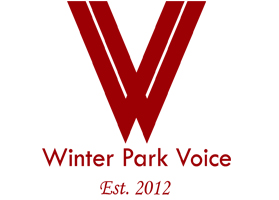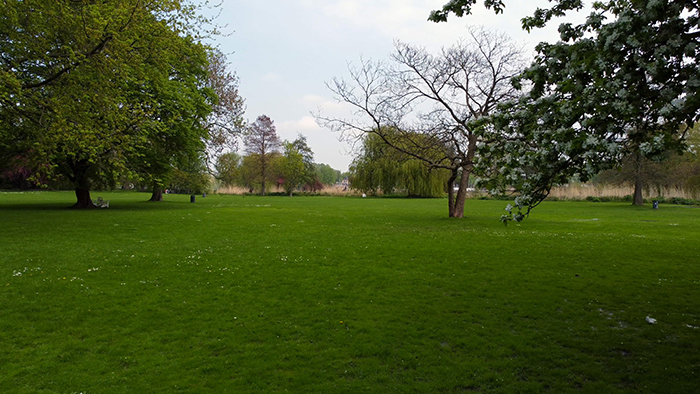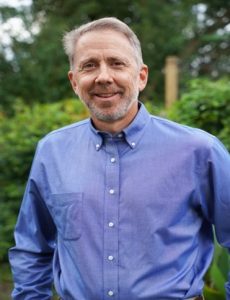Fresh Air & Sunshine
Passive Green Space is Essential to Livable Communities
Guest Columnist Paul Owens / October 3, 2021
Living in Orwin Manor, a neighborhood that straddles the Orlando-Winter Park line, but leading an organization headquartered in Tallahassee, I regularly make the 250-mile trip by car between my home and the state capital. My favorite place to stop on the way is about halfway in between: a stretch of grass and trees in Fanning Springs on the banks of the Suwannee River. It’s a pocket, passive park, with a small parking area, a restroom and some picnic tables, adjoining a larger state park that has more amenities but also an admission fee.
I’ve come to look forward to my stops in Fanning Springs as a break to de-stress and enjoy nature. I don’t care about the lack of a concession stand or a souvenir shop. A few minutes of fresh air and sunshine are all I need. Judging from the folks I see at the picnic tables, I’ve got plenty of company.
Since the global COVID-19 pandemic arrived on our shores in the spring of 2020, Americans have flocked to parks as safe places when venturing outside their homes. A survey conducted by the National Recreation and Park Association (NRPA) concluded that 260 million people in the United States — almost 80 percent — visited a local park or recreation facility at least once between May 2020 and May 2021.
Parks — critical to business relocation decisions
Parks are wildly popular. Some 80 percent of U.S. adults look for high-quality parks and recreation in choosing where to live, according to NRPA. Even more, 87 percent, consider parks and recreation an important service provided by their local government. Businesses rank quality parks and recreation among their top three factors in relocation decisions. Communities with growing populations need to add green spaces to maintain or, better yet, improve their quality of life. My organization, 1000 Friends of Florida, believes parks are a critical part of livable communities.
The Trust for Public Land (TPL), in its latest annual report rating park systems across the country, ranked St. Petersburg tops in Florida at No. 14 among 100 U.S. cities. In St. Pete, 75 percent of residents live within a 10-minute walk of a park, and more than one acre in 10 is dedicated to parks and recreation. The city’s 168 parks are a mixture of large parks with an array of recreational facilities and other amenities, and small, passive parks, without buildings or extensive paved areas.
Orlando’s Constitution Green
Five years ago, Orlando went to extraordinary lengths to preserve one of its small, passive parks. The city paid $3.34 million in cash and handed over a half-acre city-owned parcel of property worth another $2.5 million to take possession of Constitution Green, a park of less than two acres occupying a block in downtown Orlando, to save it from possible development. Constitution Green is most revered as the site of a huge, majestic oak tree estimated to be at least 125 years old. The park’s only other amenity is a dog run. Yet the city’s substantial investment met with resounding public approval.
There are numerous documented benefits of parks and green spaces for surrounding communities. They improve public health, both physical and psychological. They provide gathering spaces for families and diverse groups of people, especially when they are accessible free of charge. They beautify communities and increase nearby property values. They reduce flooding.
And notably for a state where rising temperatures are a growing concern, parks reduce temperatures, especially when they are more oriented toward grass and trees than buildings and pavement, according to TPL. They are natural cooling stations. TPL’s analysis of 14,000 cities and towns found that areas within a 10-minute walk of a park are as much as 6 degrees cooler than more distant areas.
While 81 percent of U.S. residents look to parks as a place to exercise, even more, 85 percent, appreciate them as outdoor spaces where they can relax and reflect, according to NRPA. This popularity of the passive element of parks suggests, to be visited and valued, an urban green space doesn’t need services already offered by nearby businesses, or any other bells and whistles. In a sea of rooftops, concrete and pavement, there’s much to be said for a verdant island of serenity.
Paul Owens is president of 1000 Friends of Florida, a nonpartisan, nonprofit organization based in Tallahassee and dedicated to sustainable communities. The opinions expressed in this column are his own.



Thank you Paul. Invaluable info for those of us who care about green space in our lovely little city.
In today’s Sentinel, in the weekly column where influential leaders respond to a question posed by the editors, this weeks question asked “what do you think the future of tourism in Central Florida will look like?”
Most respondents were focused on theme parks, museums, building new attractions, $$$$.1
Only one of the 10 respondents mentioned the affect climate change could have on the state of Florida. Joanie Schirm quoted a report from The Union of Concerned Scientists which predicts we could see over 140 days per year with the heat index above 100° by the end of the century. Can’t imagine many tourists would find that appealing.
This makes complete sense. Paul discusses multiple benefits about keeping our remaining parks green. There are already plenty of businesses surrounding parks so no need to build on them. It’s an investment now and in our future. Great article.
Thank you, Paul Owens, for delivering a powerful message.
Winter Park has a couple very rare opportunities before us at this moment in time. The determination of the future of Progress Point is one. Whether to make acquisition of the current post office property a reality is another.
See below for yet another Orlando story about residents who took the improbable -the impossible- and made it a reality for future generations. Priceless.
If they can do this kind of thing in O-town, why can’t we ?
https://www.clickorlando.com/news/local/2021/08/12/how-2-little-old-ladies-stopped-a-major-development-on-lake-eola/
Progress Point needs to be a park. Wth a fountain in the middle, paid for with donations from the community.
Question: What’s our green pledge, our green ethic here in Winter Park? Mayors from around the country have asked this question about their communities and have made it simple: they have pledged to offer 100 percent access for their citizens to a park or green space within a 10-minute walk of their homes by 2050.
Check it out: http://www.10minutewalk.org You will see the familiar faces of Mayors from Orlando, Tallahassee, Casselberry, Ocala, Miami, Miami Beach, Miami Gardens, Davie, Daytona Beach, Gainesville, Ft. Lauderdale, Clearwater and many others nationwide. But where’s Winter Park?
I think this simple pledge underscores the genesis of our own city’s brand and charm. It’s a vision that is both inspiring and doable.
Come on Winter Park: put on your walking shoes – let’s sign on!